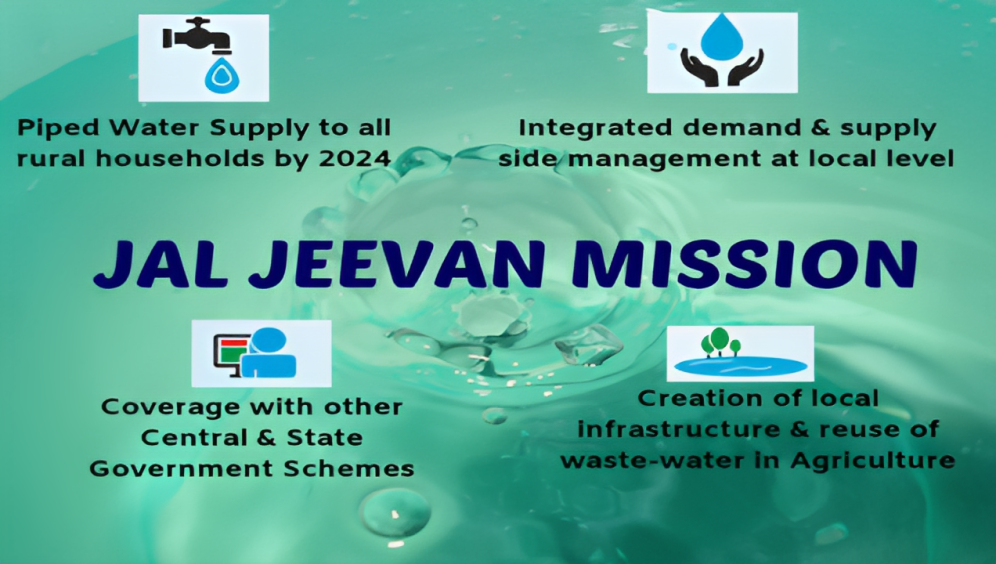Description

Disclaimer: Copyright infringement not intended.
About
- Jal Jeevan Mission (JJM) is a flagship program of the Union Ministry of Jal Shakti, which aims to provide safe and adequate drinking water to every rural household in the country by 2024.
- The mission was launched by the Prime Minister on 15 August 2019, with a budget of Rs. 3.6 lakh crore.
- The mission is based on the principle of 'Har Ghar Jal' (water in every home) and seeks to improve the quality of life and health of rural people.
Background
- India is facing a severe water crisis, with about 163 million people lacking access to safe drinking water, according to a report by WaterAid.
- The country is also ranked 120th among 122 countries in the water quality index by the World Health Organization.
Aims
- The mission ensures the continued operation of current water supply infrastructure and water connections, as well as water quality monitoring and testing and sustainable agriculture.
- It also guarantees that conserved water is used in conjunction with drinking water source augmentation, drinking water supply system, grey water treatment, and reuse.
Features
- JJM focuses on integrated demand and supply-side water management at the local level.
- Local infrastructure for source sustainability measures, such as rainwater collecting, groundwater recharge, and domestic wastewater management for reuse, is being built in tandem with other government programs/schemes.
- The mission is founded on a community-based approach to water, with substantial information, education, and communication as major components.
Implementation
- Paani Samitis is responsible for the planning, implementation, management, operation, and maintenance of village water supply systems.
- These groups include 10-15 members, with at least 50% women and other members from Self-Help Groups, Accredited Social and Health Workers, Anganwadi teachers, and other organizations.
- The committees develop a one-time village action plan that incorporates all available community resources. Before implementation, the plan is authorized by a Gram Sabha.
.jpg)
Funding pattern
- The Centre and states split funds 90:10 for Himalayan and North-Eastern states, 50:50 for other states, and 100% for Union Territories.
What has JJM's track record been?
- Currently, over 12.3 crore (62%) of rural households have piped water connections, an increase from 3.2 crore (16.6%) in 2019.
- Gujarat, Telangana, Goa, Haryana, and Punjab, as well as three Union Territories – Andaman and Nicobar Islands, Daman Diu & Dadra Nagar Haveli, and Puducherry — have reported 100% coverage.
- Himachal Pradesh, at 98.87%, and Bihar, at 96.30%, are also on track to reach saturation shortly.
What is Jal Jeevan Mission (Urban)?
- Jal Jeevan Mission (Urban) was declared in the Budget 2021-22 under the Ministry of Housing and Urban Affairs to ensure universal coverage of water supply to all households through functioning taps in all statutory towns in compliance with SDG-6.
- It supplements the Jal Jeevan Mission (Rural), which aims to provide 55 liters of water per person per day to every rural household by 2024 through Functional Household Tap Connections (FHTC).
Objectives of Jal Jeevan Mission (Urban):
- Securing tap and sewer connections.
- Rejuvenation of water bodies.
- Creating a circular water economy.
PRACTICE QUESTION
- What is water stress? How and why does it differ across India?
https://epaper.thehindu.com/ccidist-ws/th/th_delhi/issues/52047/OPS/GT0BOPND7.1.png?cropFromPage=true
https://jaljeevanmission.gov.in/











